Over the years, my team and I have garnered extensive experience working across various veterinary landscapes. Collectively, we have been a part of over 25 different vet clinics and had the privilege to visit hundreds more. This has provided us with a unique vantage point when it comes to understanding the tools of the trade. One common query that dog owners often present to us is about the best nail clippers for their furry friends.
Today, I’m thrilled to share with you our findings on the top 3 nail clippers that are a favorite among MOST veterinarians. These aren’t your average nail clippers. The reasons these particular models stand out from the rest are because they:
- Cut nails with precision and ease.
- Can withstand the daily wear and tear, holding up to abuse.
- Are designed to be easily maintained and sanitized.
- Remain sharp for an impressive duration, making them a worthy investment.
- And importantly, they’re robust enough to handle the thick nails of larger dog breeds.
Traditionally, most of these top-notch clippers were accessible only through veterinary clinic suppliers and grooming specialists. However, the digital age has bridged this gap. Now, you too can equip yourself with the very same nail trimmers that professionals swear by, all available for purchase online. So why settle for less when you can give your beloved pet the best?
Join me as we delve deeper into the world of dog nail clippers and unravel the tools that veterinary professionals hold in high regard!

What to Look For in Dog Nail Clippers
Choosing the right nail clippers for your furry friend can feel a tad overwhelming, especially with so many options out there. But fear not, I’m here to guide you through this maze. Drawing from years of experience and countless hands-on encounters with these tools, here’s a distilled list of what to look out for when making your choice:
Types of Nail Clippers
There are primarily three types to choose from. Understanding their features can help determine what’s best for your pup:
- Scissor Clippers:
- Best for: Larger breeds with thicker nails.
- Features: Looks like scissors and operates in a similar fashion.
- Advantages: Powerful and can cut thick nails cleanly.
- Caution: Might require more hand strength.
- Guillotine Clippers:
- Best for: Smaller breeds with delicate nails.
- Features: Has a hole where you insert the nail, and a blade slices it off when you press the handle.
- Advantages: Easier to maneuver for small nails.
- Caution: Might not work effectively for thick nails.
- Grinders:
- Best for: Dogs scared of clipping sounds or for fine-tuning after a cut.
- Features: Sands the nail down instead of cutting. Often battery-operated.
- Advantages: Reduces chances of cutting the quick and provides a smooth finish.
- Caution: Can produce a sound and vibration that might require some getting used to for your pet.
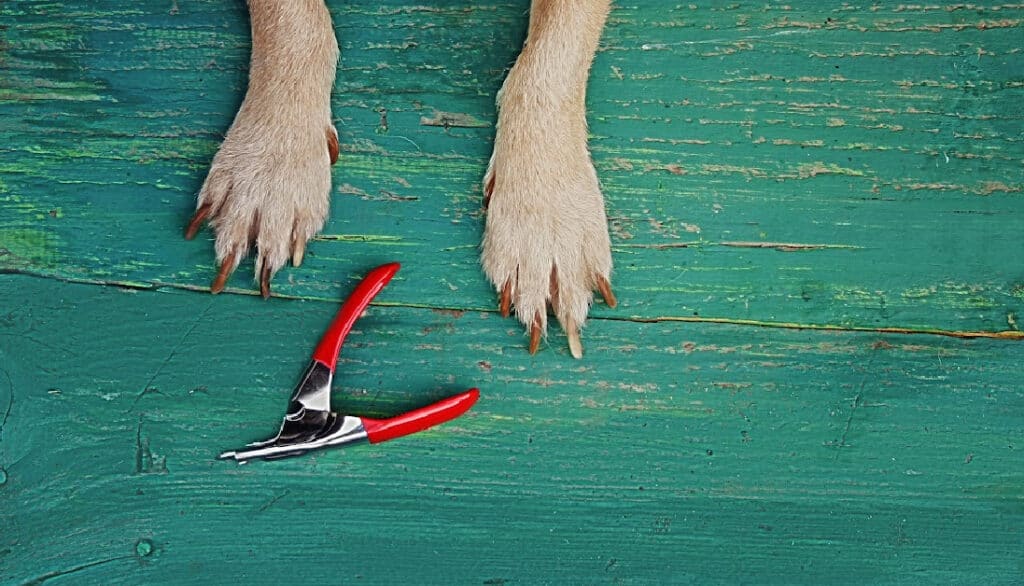
Size and Blade Sharpness
The right size and sharpness matter for precision and safety:
- Size Matters: Ensure the clippers are appropriate for your dog’s breed and size. Using oversized or undersized clippers can lead to improper cuts.
- Sharp Blades: A clean cut reduces the risk of splintering or cracking. Sharp blades also make the process quicker and less stressful for your dog.
Safety Features
Safety first! Keep an eye out for these:
- quick Guards: These are barriers that prevent you from cutting too far into the nail and accidentally injuring the quick.
- Safety Stops: Prevents the blade from over-cutting.
- Ergonomic Handles and Grips: A comfortable grip ensures you can hold the clippers steadily, reducing chances of a mishap.

Boshel Dog Nail Clippers with Safety Guard
Material and Durability
Quality tools are a smart long-term investment:
- Stainless Steel vs. Plastic: Stainless steel blades remain sharp longer and are more durable. Look for handles that are sturdy yet comfortable.
- Long-lasting Products: Check reviews or ask for recommendations. It’s better to invest in a slightly pricier tool that stands the test of time than to keep replacing cheaper ones.
Ease of Maintenance
Your clippers should be easy to clean and maintain:
- Sanitization: Check if the clippers can be easily cleaned. This is crucial to prevent potential nail infections.
- Replaceable Blades: Some premium clippers allow for blade replacements, ensuring longevity and consistent performance.
In summary, picking the right nail clippers boils down to understanding your dog’s specific needs and prioritizing safety and quality. With the right tools, nail trimming can be a breeze for both you and your pet. Happy clipping!

Best Dog Nail Clippers: Vet Recommendations
Ah, the crux of the matter! Given the myriad of nail clippers available, we’ve often been asked, “Which ones do the pros actually use?” Well, based on our collective experience and insights gathered from various vet clinics, we’ve rounded up the top picks that veterinarians vouch for. Let’s dive right in!
Scissor Clippers
Recommended Brand: Millers Forge
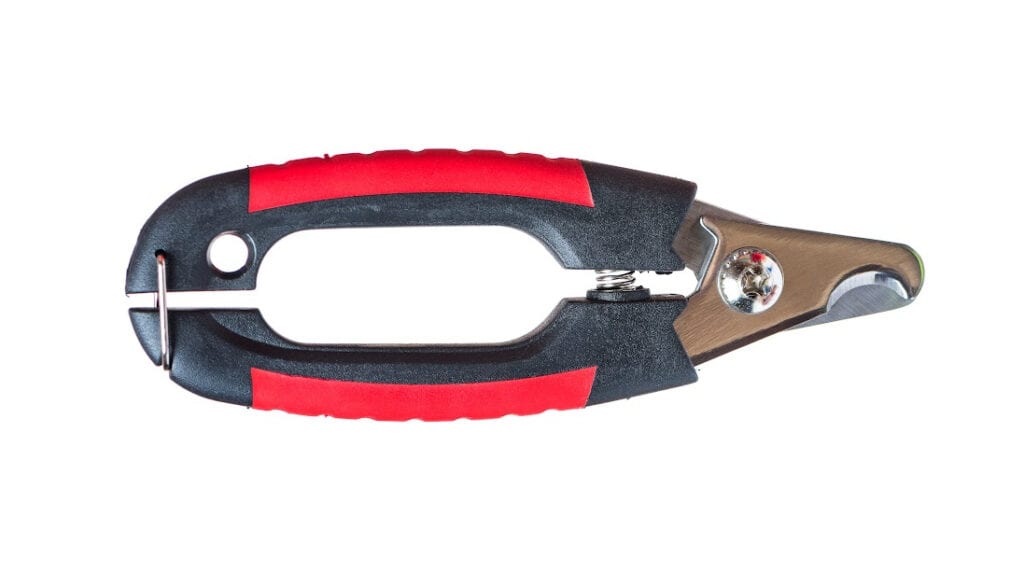
Millers Forge Dog Nail Clip, Large. Premium Pack
- Number 1 choice of veterinarians and groomers
- Strong stainless steel outlasts other nail clippers
- Stays sharp for easy cutting
Guillotine Clippers
Recommended Brand: Coastal Pet Safari Guillotine
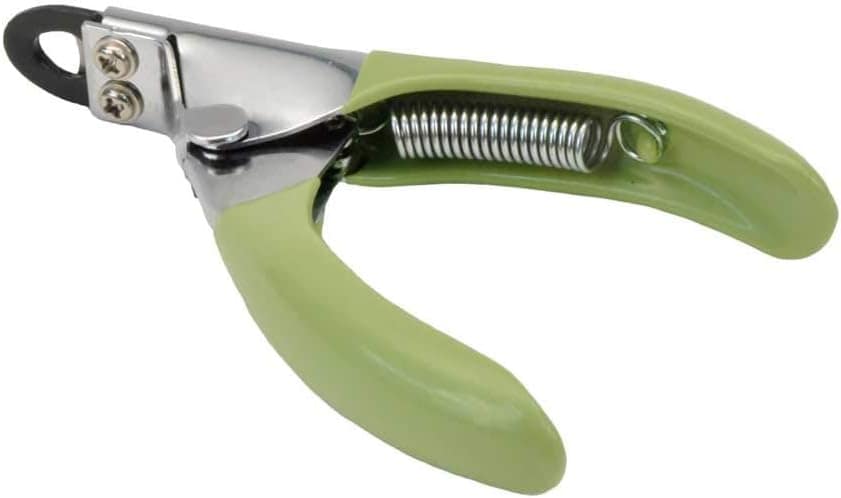
Coastal Pet Safari Guillotine Dog Trimmer
- Designed to give a clean and precise cut, minimizing the risk of splitting or fraying the nail.
- Simple mechanism is user-friendly, making the nail-trimming process more efficient.
- Ensures a comfortable hold, reducing the chance of slips or mishaps during nail clipping.
Grinders
Recommended Brand: Dremel PawControl Dog Nail Grinder
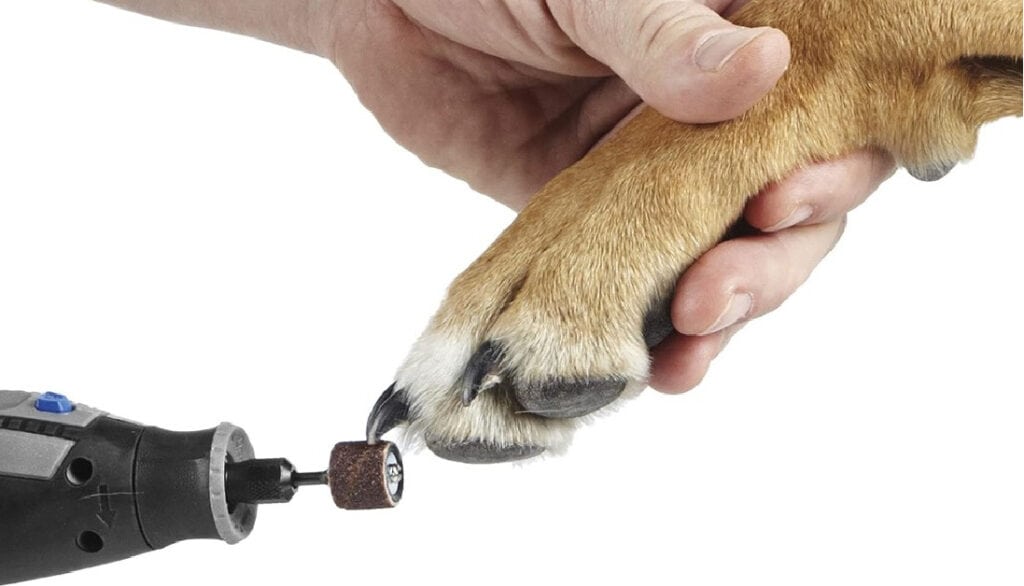
Dremel PawControl Dog Nail Grinder
- Reduces the risk of cutting into the quick, ensuring a safer trimming experience for the pet.
- Produces smoother edges than traditional clippers, which can be less stressful for both pets and owners.
- Suitable for pets of various sizes and nail thicknesses.
It’s essential to remember that while these are top vet recommendations, the best tool for your dog is the one that both you and your pet are most comfortable with. If you’re ever in doubt, consider visiting a local vet or groomer for a live demonstration. Not only can this be educational, but it can also instill confidence in your own nail-trimming abilities. Happy grooming!
Dog Nail Grinder vs. Clipper: What’s the Difference?
Ah, the age-old debate in the dog grooming world: Should you go with the classic clipper or the modern grinder? Both tools aim to achieve the same result—keeping your dog’s nails at a safe and comfortable length. However, their methodologies differ, and each has its own set of advantages and challenges. Let’s delve deeper into the characteristics of each tool and help you determine which might be best suited for your furry friend.
Dog Nail Clippers
Overview: Clippers come in various types, including the scissor and guillotine styles. They function by cutting off the nail in chunks.
Advantages:
- Speed: For experienced users, clipping is often faster than grinding.
- No Noise: Clippers are generally silent, which can be less stressful for dogs sensitive to noise.
- Cost: Typically, clippers are less expensive than grinders.
Challenges:
- Risk of Overcutting: If not used carefully, it’s easy to cut into the quick, causing pain and bleeding.
- Splintering: Clippers can occasionally cause the nail to splinter, especially if not sharp.
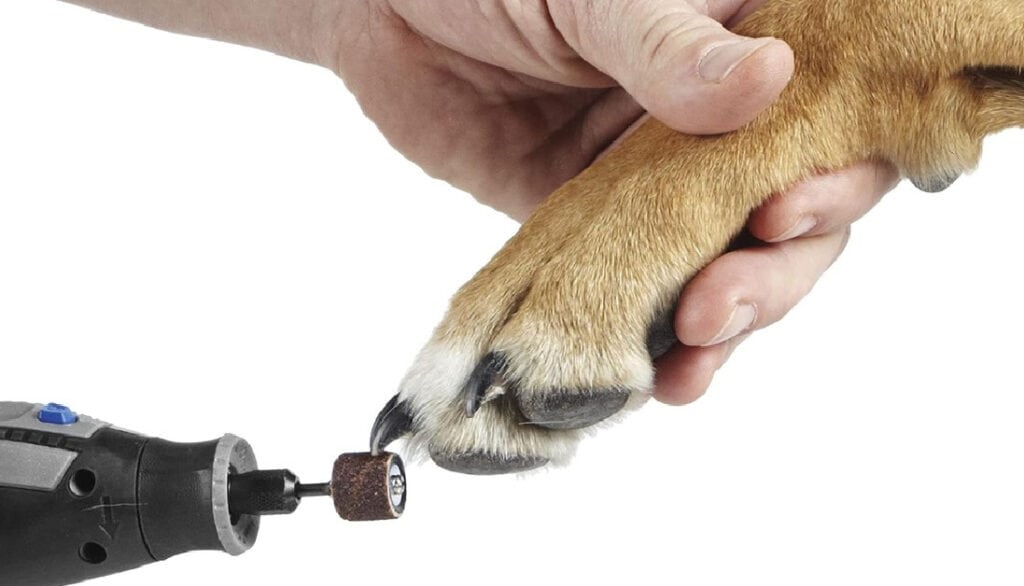
Dog Nail Grinders
Overview: Grinders, often electric or battery-powered, use a rotating component to sand down the dog’s nail gradually.
Advantages:
- Precision: Grinders allow for a more gradual and controlled reduction of the nail, reducing the risk of cutting into the quick.
- Smooth Finish: They leave the nails with a rounded, smooth edge, which can be gentler on floors and human skin.
- Less Risk of Splintering: Unlike clippers, grinders don’t pose the risk of causing the nail to split or crack.
Challenges:
- Noise and Vibration: Grinders produce a sound and vibration, which might require acclimation for some dogs.
- Time-Consuming: Especially for thick nails, grinding can take longer than clipping.
- Maintenance: Grinders may require periodic replacement of the grinding tip or band.
Whether to choose a grinder or clipper often boils down to personal preference, your dog’s temperament, and the specific needs of their nails. Some pet owners use both: a clipper for a quick trim followed by a grinder to smooth out the edges. Remember, no matter the tool, patience and positive reinforcement go a long way in making the nail-trimming experience pleasant for both you and your pup.
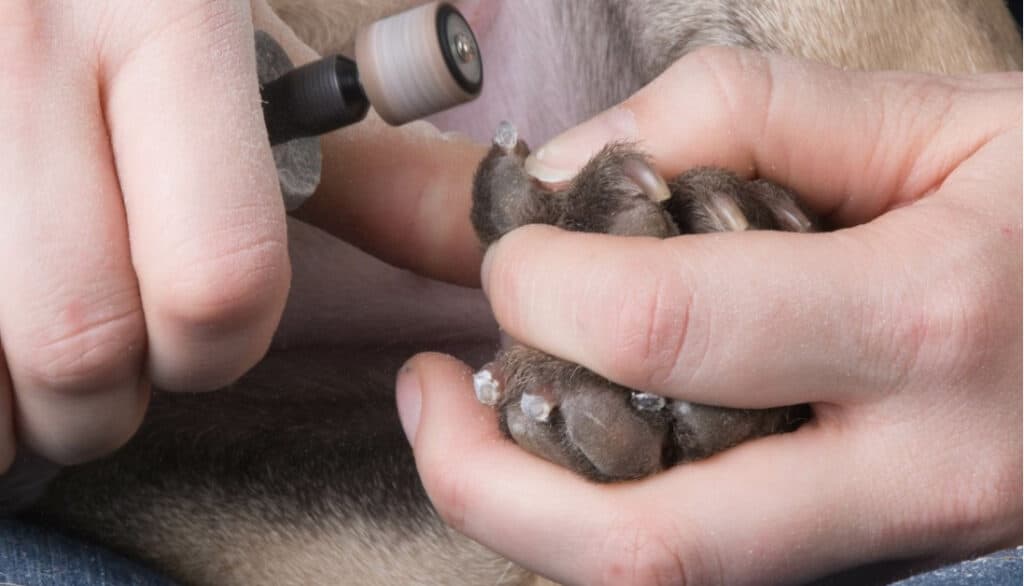
Why Nail Care is Important
Caring for your pet extends beyond feeding them and providing them with love and shelter. Just like regular vet check-ups and a balanced diet are crucial, so is maintaining their nails. But why exactly is nail care so significant for dogs? Let’s dive into the reasons and the repercussions of neglecting this aspect of their grooming.
1. Comfort and Mobility
Overgrown nails can be tremendously uncomfortable for dogs. When nails become too long:
- Pressure: Each time your dog sets their paw down, overgrown nails can force their toes to splay or twist awkwardly, causing discomfort or pain.
- Walking Difficulties: This can even alter their natural posture and gait, which might lead to skeletal problems in the long run.
2. Protection from Injuries
Long nails are prone to:
- Splitting or Breaking: Overly long nails can get caught on surfaces, potentially tearing, splitting, or even breaking. Such injuries are painful and can become infected.
- Quick Growth: The ‘quick’ in the nail (the blood vessel and nerve inside) tends to grow along with the nail. This means that the longer you leave your dog’s nails, the longer the quick becomes, making future trims more challenging and riskier.
3. Reduced Risk of Health Issues
Neglecting nail care can lead to:
- Joint and Bone Issues: Continuous pressure from long nails can cause joint pain and even contribute to issues like arthritis.
- Infections: Nails that curl can grow into the foot pad. This not only is painful but can also lead to infections.
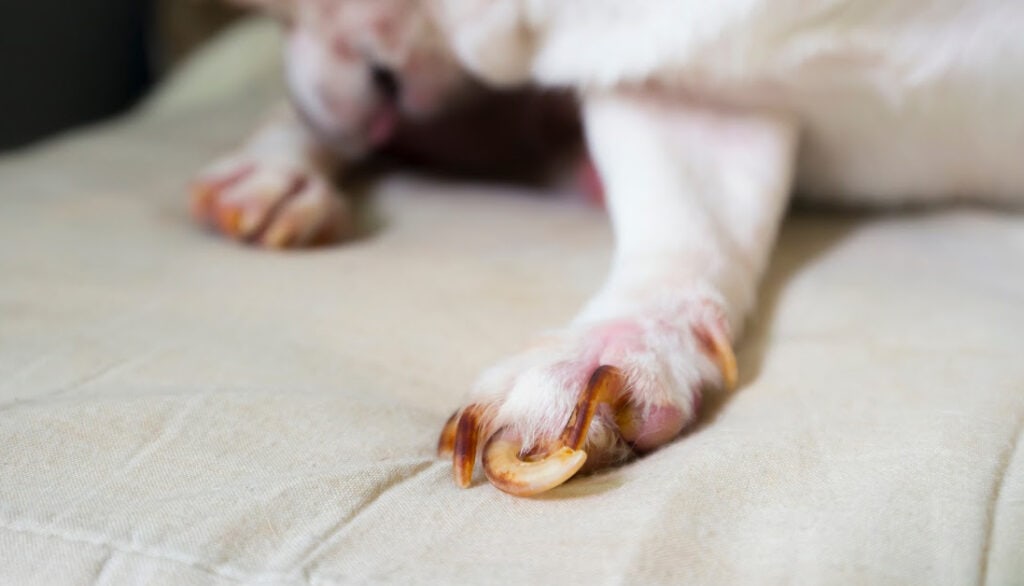
4. Enhanced Interaction
Short, well-maintained nails:
- Safer Play: Ensure that your dog doesn’t inadvertently scratch or harm other pets or people while playing.
- Protection for Your Home: Long nails can cause damage to furniture, carpets, and even scratch wooden floors.
5. Routine Health Check
Regular nail trims also give you a chance to:
- Examine Their Paws: Check for any issues like fungal infections, cuts, or sores.
- Bonding Time: While not all dogs love getting their nails trimmed, the routine, when paired with positive reinforcement, can become a bonding ritual between you and your pet.
In essence, while nail trims might seem like a cosmetic concern, they play a pivotal role in your dog’s overall health and well-being. Establishing and maintaining a regular nail care routine ensures your dog stays comfortable, healthy, and happy
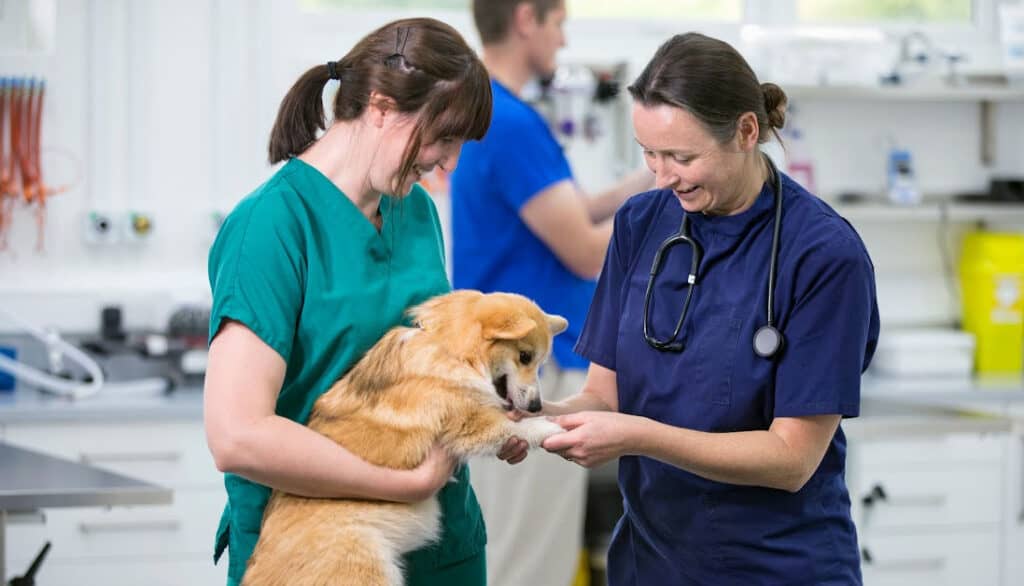
How Often Should You Trim Your Dog’s Nails?
It’s a question that many dog owners grapple with: How frequently should those claws get a clip? The answer isn’t a straightforward “every X weeks,” because several factors come into play. Let’s walk through them to help you determine the right nail-trimming schedule for your pooch.
1. Growth Rate Varies
Much like human nails, the rate at which dog nails grow can differ:
- Breed Differences: Some breeds naturally have faster-growing nails.
- Age Factor: Puppies might require more frequent trims as their nails grow swiftly, while older dogs might see a slowdown in nail growth.
2. Activity Level
- Active Outdoors: Dogs that spend more time outdoors, especially on harder surfaces like concrete or asphalt, will naturally wear down their nails. These dogs might require less frequent trimming.
- Indoor or Soft Terrains: Conversely, dogs that spend most of their time indoors or playing on grass won’t have the same natural wear, necessitating more regular trims.
3. Nail Type
- Dark vs. Clear Nails: Dogs with clear or white nails make it easier for owners to spot the quick, allowing for more confident, frequent trims. Those with darker nails might be trimmed less often due to uncertainty about where the quick is.
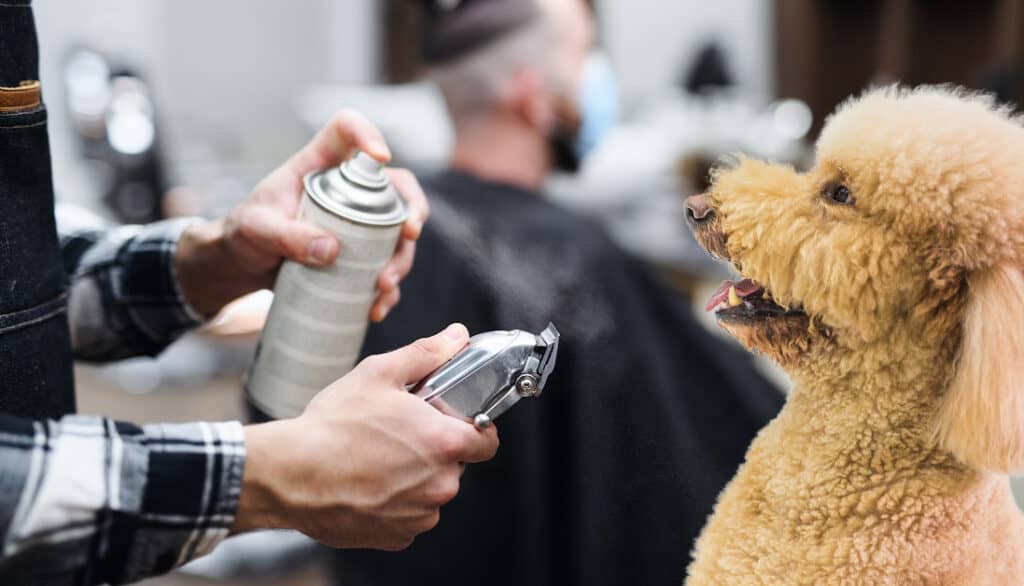
General Guidelines
While individual circumstances will dictate the exact frequency, here’s a general guideline:
- Active Dogs: Every 3-4 weeks.
- Less Active or Indoor Dogs: Every 2-3 weeks.
- Puppies: Consider checking every week due to rapid growth.
Signs It’s Time for a Trim
Regardless of these general guidelines, keep an eye out for these tell-tale signs:
- Hearing the ‘Click’: If you hear your dog’s nails clicking on the floor, it’s a good indication that a trim is overdue.
- Examination: Check your dog’s nails. If they’re touching the ground when your dog is standing still, it’s time for a cut.
- Behavioral Signs: Dogs might start chewing at overly long nails, or you might notice changes in their walking pattern.
In conclusion, the frequency of nail trims will vary based on individual dog needs. If you’re ever uncertain, a good rule of thumb is to do regular checks and listen for the telltale “clicking” sound. And remember, when in doubt, consult with your vet or a professional groomer to establish the best routine for your furry friend.
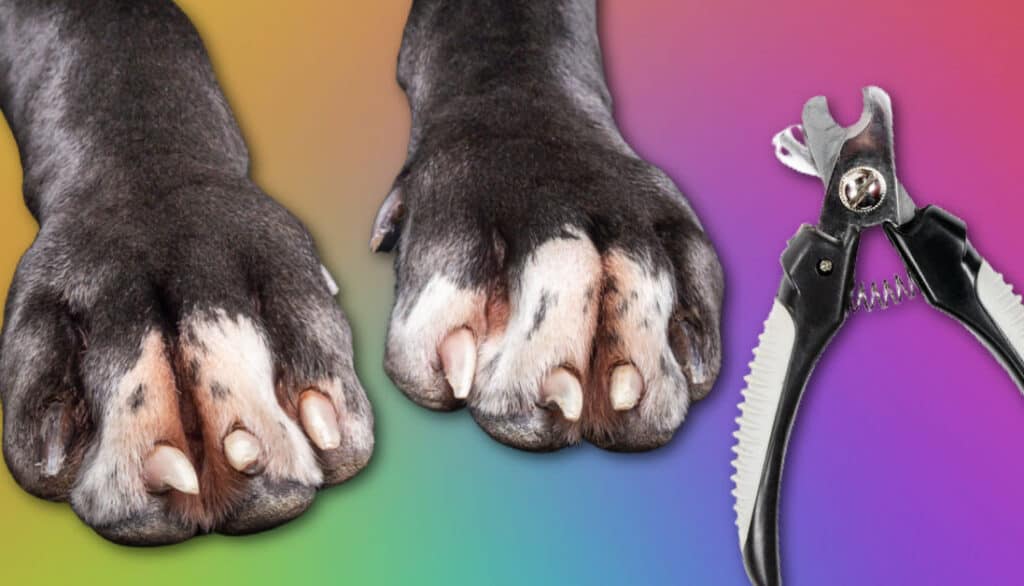
How To Trim Your Dog’s Nails: Step By Step
Trimming your dog’s nails might seem daunting, especially if you’ve never done it before or if your dog is apprehensive. But with patience, the right tools, and a systematic approach, it can become a hassle-free routine for both you and your canine companion. Here’s a step-by-step guide to help you confidently and safely trim those claws.
1. Gather Your Supplies
Before you begin, ensure you have:
- Suitable dog nail clippers or grinder
- A styptic powder or pencil (in case of any bleeding)
- Dog treats (for positive reinforcement)
- Good lighting
- A towel or mat for your dog to sit or stand on
2. Choose the Right Time
- Post-Exercise: It’s best to trim your dog’s nails after they’ve had some exercise when they’re more relaxed and tired.
- Quiet Environment: Minimize distractions and choose a calm environment.
3. Get Your Dog Acclimated
If it’s your dog’s first time:
- Let them sniff and explore the clippers.
- Gently handle their paws regularly to get them used to the sensation.
- Give them treats and use positive reinforcement to create a positive association.

4. Positioning
- Have your dog sit or stand in a comfortable position.
- If your dog is small, you might prefer to place them on a table or counter (with supervision).
- For larger breeds, sitting beside them or having them stand is often easiest.
5. Start Clipping
- Hold the paw firmly but gently.
- If your dog has clear nails, you’ll see a darker area, which is the quick. Avoid cutting into this to prevent pain and bleeding.
- For dark nails, trim a little at a time, looking for a solid black dot in the center of the nail. This is an indication that you’re getting close to the quick.
- Make smooth, confident cuts perpendicular to the nail.
6. In Case of Bleeding
If you accidentally cut into the quick:
- Don’t panic; stay calm to keep your dog at ease.
- Apply styptic powder or press the pencil onto the bleeding area.
- Wait a minute or two for the bleeding to stop.
7. Reward and Reinforce
After each paw or even after each nail:
- Give your dog a treat and praise them for being good.
- This positive reinforcement will make future trims easier.
8. Post-Trimming
Check for any sharp edges, especially if using clippers. You can use a grinder or a nail file to smooth any rough spots.
Remember, if you’re uncertain or nervous, consider doing just one nail a day or seek assistance from a vet or professional groomer. With practice and patience, nail trimming can become a straightforward and stress-free task.
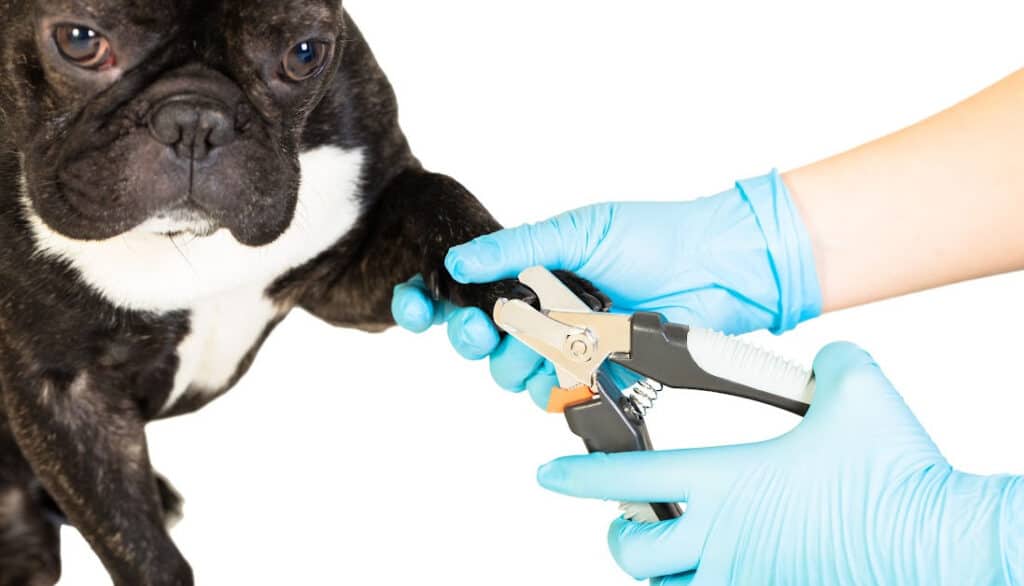
Should You Get a Professional to Trim Your Dog’s Nails?
Many dog owners wrestle with the decision of whether to trim their pet’s nails themselves or seek the assistance of a professional. Both choices have their advantages and potential drawbacks. Let’s unpack the factors you might consider when deciding the best route for you and your furry friend.
The Case for Professional Grooming
1. Expertise and Experience: Professionals have handled countless paws and nails. Their experience means they can swiftly and safely trim nails, reducing the risk of cutting the quick.
2. Equipment: Groomers have top-of-the-line equipment that’s regularly maintained and sanitized.
3. Less Stress: If you’re anxious about trimming your dog’s nails, your pet can pick up on that anxiety. A groomer’s confidence can make the process smoother.
4. Additional Services: Many grooming sessions include other perks like bathing, brushing, and ear cleaning.
5. Ideal for Difficult Dogs: Some dogs are particularly squirmy or fearful. Professionals are trained to handle such challenges.
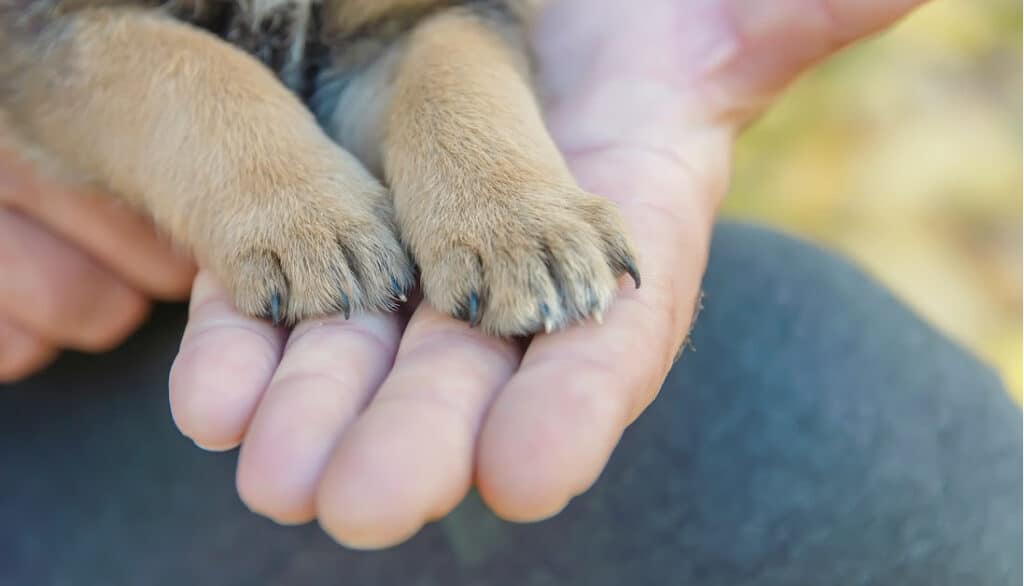
The Case for DIY (Do It Yourself)
1. Cost-Effective: Over time, trimming your dog’s nails at home can save you a significant amount.
2. Bonding Time: With the right approach, nail trimming can become a bonding ritual between you and your pet.
3. Flexibility: You can trim your dog’s nails whenever needed, rather than waiting for an appointment.
4. Familiar Environment: Your dog might feel more at ease getting their nails trimmed at home rather than a new, unfamiliar place.
5. Gradual Approach: If your dog has anxiety, you can take it one nail at a time, spreading the process over several days.
Factors to Consider
1. Dog’s Temperament: Is your dog generally calm or do they have grooming anxiety?
2. Your Confidence Level: Are you comfortable handling your dog’s paws and using nail clippers or grinders?
3. Equipment: Are you willing to invest in good quality nail trimmers and possibly grinders?
4. Frequency: How often does your dog’s nails need trimming, and can you keep up with the routine?
In conclusion, the decision to trim your dog’s nails yourself or opt for a professional boils down to personal preference, your dog’s temperament, and your comfort level. Whichever route you choose, the primary goal is to ensure your dog’s nails are kept at a healthy length, contributing to their overall well-being.

Conclusion
Your dog’s nails, while a small part of their body, play a significant role in their overall health and comfort. Whether you decide to take the DIY route or entrust a professional, the key lies in regular care and understanding the importance of nail maintenance. Throughout our time in various vet clinics and our interactions with hundreds more, we’ve realized that while there are several paths to achieving well-kept dog nails, the destination remains consistent: a happier, more comfortable pet. So, armed with knowledge and the best tools, let’s ensure our four-legged friends trot comfortably, with well-groomed paws hitting the pavement. Remember, every step you take in caring for your dog’s nails is a step towards a healthier, happier pup!
Frequently Asked Questions (FAQs)
If you’ve cut into the quick, your dog might yelp in pain, and you’ll notice some bleeding. The quick is the sensitive part of the nail that contains blood vessels and nerves. Always have styptic powder on hand to stop any bleeding.
It’s essential to introduce the tools gradually. Start by letting your dog sniff and familiarize themselves with the clippers or grinder. You can also touch their paws without cutting to get them used to the sensation. Pair these actions with treats and positive reinforcement.
While it’s technically possible for very small breeds or puppies, human nail clippers aren’t designed for the thickness and shape of dog nails. It’s best to invest in clippers specifically made for dogs to ensure a safe and efficient trim.
Trim a little at a time, looking at the cut end of the nail. As you approach the quick in darker nails, you’ll start to see a grey or whitish circle with a black dot in the center. When you see this, stop cutting.
Absolutely! Many vet clinics offer nail trimming services. Some pet stores also host regular grooming events where professionals trim nails for a fee.
